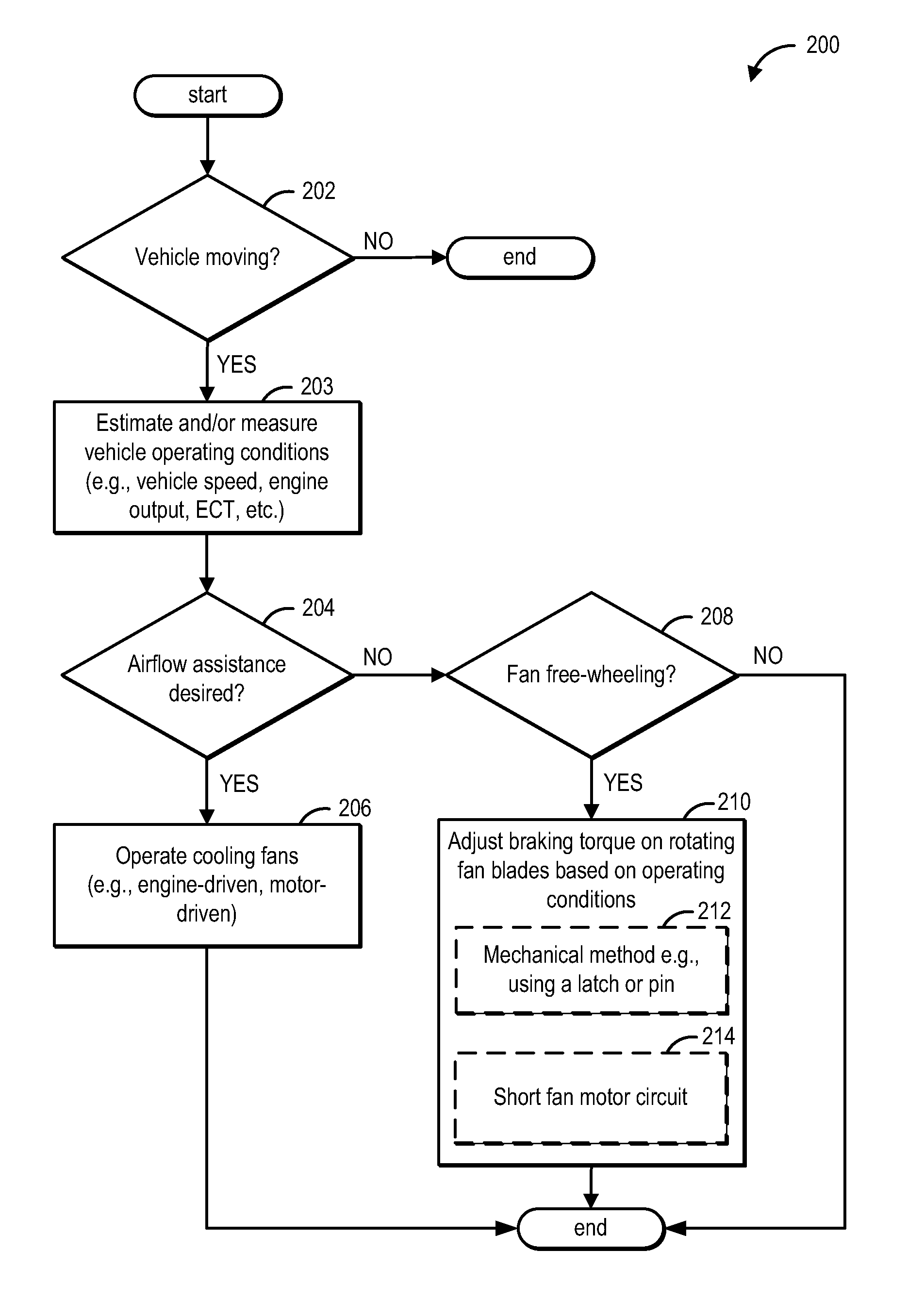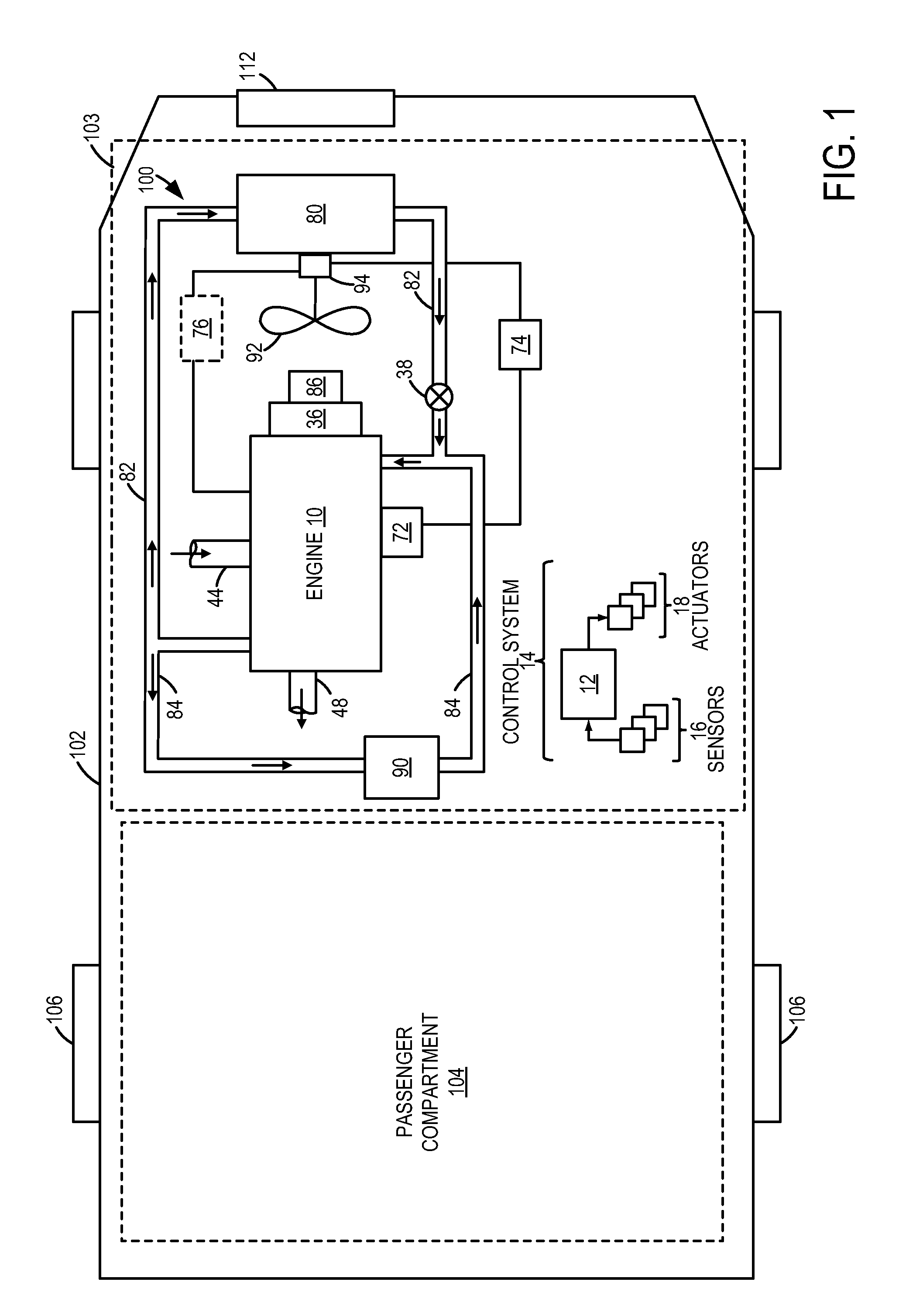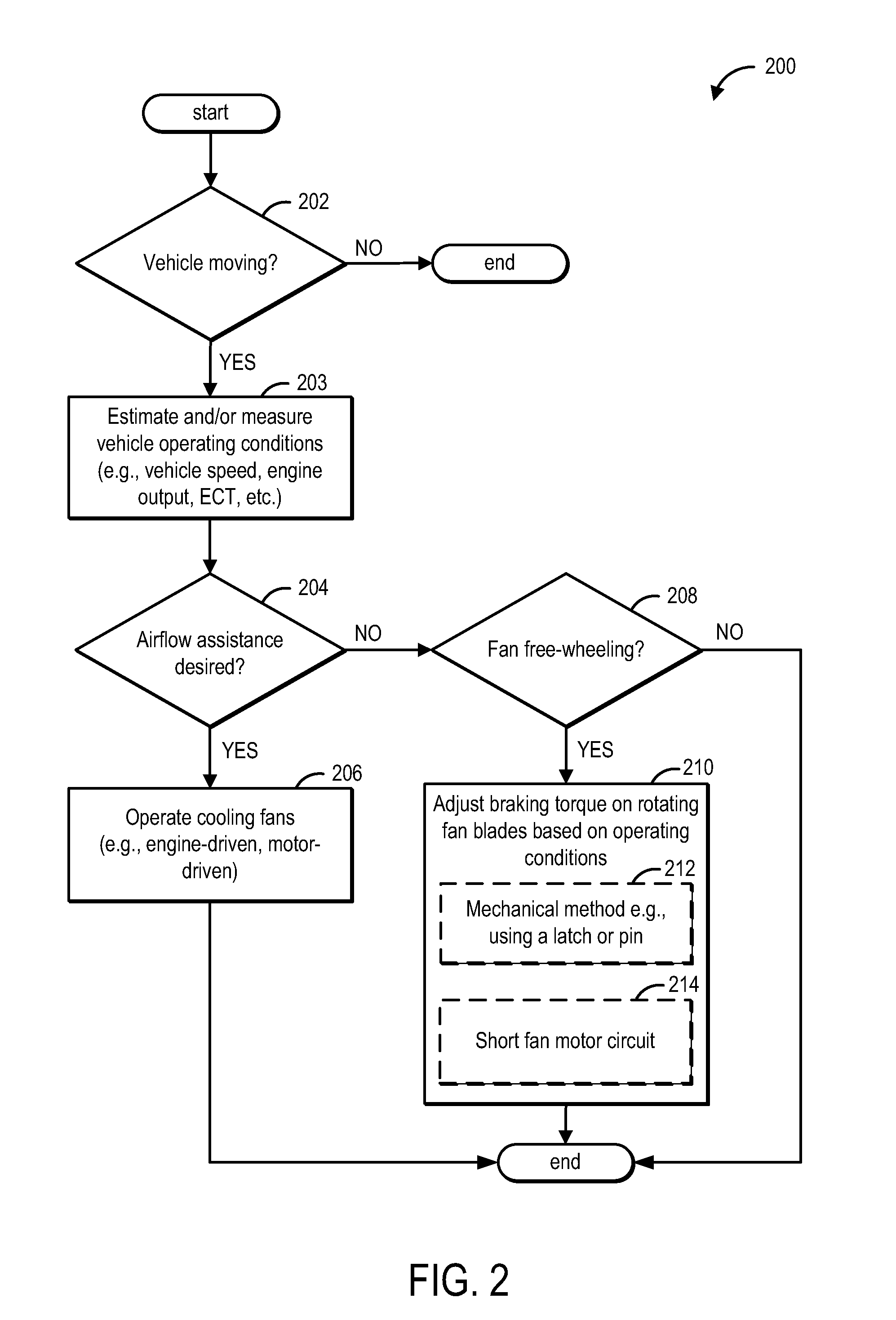Cooling fan control
a cooling fan and control technology, applied in the direction of positive displacement liquid engines, pumping, machines/engines, etc., can solve the problems of increasing cooling drag, reducing the resistance of the cooling system, and adding aerodynamic drag to the front-end air flow of the vehicle, so as to achieve the effect of adding aerodynamic drag
- Summary
- Abstract
- Description
- Claims
- Application Information
AI Technical Summary
Benefits of technology
Problems solved by technology
Method used
Image
Examples
Embodiment Construction
[0013]The following description relates to systems and methods for controlling a cooling fan in a vehicle cooling system, such as the system of FIG. 1. During engine operation, the cooling fan may be driven by the engine to flow cool air through the front end of a vehicle and cool components in the under-hood region. To reduce cooling drag induced by free-wheeling of the fan, during a vehicle moving condition when airflow assistance is not required, based on vehicle operating conditions, a braking torque may be selectively applied to the rotating fan blades to reduce airflow through the fan and under-hood region. An engine controller may perform a control routine, such as depicted in FIG. 2, to either apply a mechanical braking torque or an electrical braking torque, based on the vehicle operating conditions, to thereby stop fan rotation. By reducing fan free-wheeling, air flow through the vehicle cooling system may be reduced when fan operation is not desired. By reducing front-end...
PUM
 Login to View More
Login to View More Abstract
Description
Claims
Application Information
 Login to View More
Login to View More - R&D
- Intellectual Property
- Life Sciences
- Materials
- Tech Scout
- Unparalleled Data Quality
- Higher Quality Content
- 60% Fewer Hallucinations
Browse by: Latest US Patents, China's latest patents, Technical Efficacy Thesaurus, Application Domain, Technology Topic, Popular Technical Reports.
© 2025 PatSnap. All rights reserved.Legal|Privacy policy|Modern Slavery Act Transparency Statement|Sitemap|About US| Contact US: help@patsnap.com



